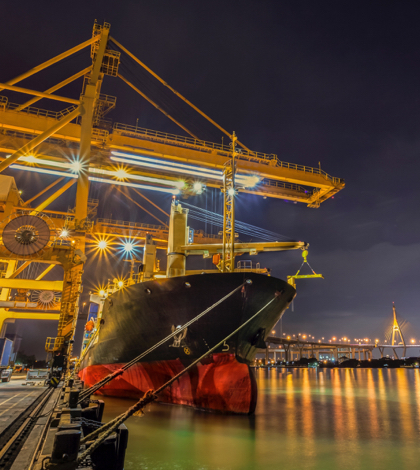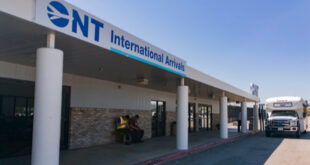Battle between truck drivers, dock workers and port companies could hurt deliveries to the two-county region. Holiday shipments could be affected if a settlement isn’t reached soon, local logistics officials say.
Warehouse-distribution operators in the Inland Empire are watching the slowdown at the ports of Los Angeles, and some of them aren’t liking what they see.
The dispute between the International Longshore and Warehouse Union and the Pacific Maritime Association, which represents businesses that operate shipping lines and port terminals, could impact deliveries into the Inland region, according to officials with two of the largest logistics operators in the Inland region.
“We’re watching it closely, even daily, and we’re very concerned about it,” said Kim Snyder, president of the southwest region of Prologis, the global industrial developer that owns and operates about 36 million square feet of industrial space in Riverside and San Bernardino counties.
Snyder, whose territory includes the Inland region, estimates there up to 15 or 20 boats off the ports of Los Angeles and Long Beach, waiting to dock and be unloaded, only knows when that will happen.
“Christmas is still a month away, so I wouldn’t call the situation dire yet,” Snyder said. “ But it will be if this thing isn’t resolved quickly.”
Some progress was made Thursday, when drivers from three trucking companies voted to end their four-day old strike at both ports after Los Angeles Mayor Eric Garcetti helped negotiate a truce.
The dispute, however, is far from resolved, as two trucking companies that serve both ports remain on strike.
Meanwhile, the three trucking companies that returned to work, the port companies and the Teamsters Union have agreed to “continue discussions to resolve outstanding issues,” according to a statement issued jointly by those entities.
The companies also agreed to “respect drivers’ rights to choice regarding unionization,” according to the statement.
Garcetti helped broker a similar agreement last summer, when drivers walked off the job and set up picket lines at both ports.
The drivers allege that they are being unfairly classified as independent contractors, which makes it difficult for them to form a union. It also leaves them with fewer workplace protections, and pay that is lower than what they would receive if they were company employees, the drivers maintain.
About 20,000 dockworkers on the West Coast have worked without a contract since July, as all ports and terminals have stayed open during the various disputes. Negotiations have been ongoing since May.
Recently, the port companies have accused both parties of working slowly to slow down port operations.
Specifically, they say the longshoreman’s union has refused to dispatch its workers that operate cranes to lift cargo containers onto railroad cars and trucks, causing ships to back up and cargo to remain unloaded. Union officials have declined to comment on those allegations.
In the event of a shutdown, some food items would perish but most cargo would be diverted to other ports. In the meantime, retailers would lose money while a lot of dockworkers and truck drivers would not be getting paid.
Regardless of the reasons for the dispute, Snyder and other Inland warehouse-distribution officials want the issues resolved.
They note that 40 percent of the goods shipped into the United States pass through the Los Angeles and Long Beach ports every year, or roughly 12.5 percent of the country’s gross domestic product.
That could make any interruption in service catastrophic, doubly so with the Christmas shopping season approaching.
It could also disrupt the entire supply chain throughout the United States, said Stephen Batcheller, a partner with Panattoni Development in Newport Beach and president of NAIOP Inland Empire, the local chapter of the national commercial real estate organization.
“I’m very concerned about it,” Batcheller said. “We have a lot of retail clients, and they’re all concerned about it. Some of them, especially some of the apparel companies, are flying their goods in from China. That’s expensive, but Christmas is a month away and they have to get their products on the shelves.”
The dispute, while it has not yet shut down any ports or terminals, has prompted Target, Walmart and the National Retail Federation to ask President Obama to send a federal mediator to help settle the dispute.
“That should tell you how serious this situation is,” said Batcheller, who said Panattoni Development manages about four million square feet of industrial real estate in Southern California, much of it in Riverside and San Bernardino counties. “When you look off the coast and you see are freighters lined up you have a problem.”
Fortunately, the port delays have not caused the interruption of any shipments of good to the Inland Empire, even to the region’s east end, according to a veteran broker who specializes in big-box industrial projects.
“It’s not really a strike, and it’s not affecting deliveries to the Inland Empire very much,” said Chuck Belden, executive director with Cushman-Wakefield Ontario. “The drivers are used to getting two turnarounds a day from the ports, and now they’re getting one. Most of the Christmas deliveries are done anyway.”
Labor disputes aren’t the only reason cargo is stalled at the ports of Los Angeles and Long Beach, said Jon DeCesare, chief executive officer of World Class Logistics Consulting in Long Beach and a NAIOP member.
Some boats are too large for the ports to accommodate them, and since the start of this year there’s been a shortage of the chassis that are used to move containers.
“There aren’t enough chassis to go around, and that has caused a lot of the slowdown at both harbors,” said DeCesare, who has more than 30 years experience helping companies plan and improve their supply chains. “You also have these 15,000-square-foot containers that some of the ports can’t handle”
The problems at both ports are only now starting to get the media attention they merit, DeCesare said.
“I don’t know why, but until recently only the trade publications have been covering it,” DeCesare said. “There was nothing in the Wall Street Journal or the Los Angeles Times, which is unusual when you consider how much passes through those ports every day. It’s a major issue.”
 IE Business Daily Business news for the Inland Empire.
IE Business Daily Business news for the Inland Empire.


